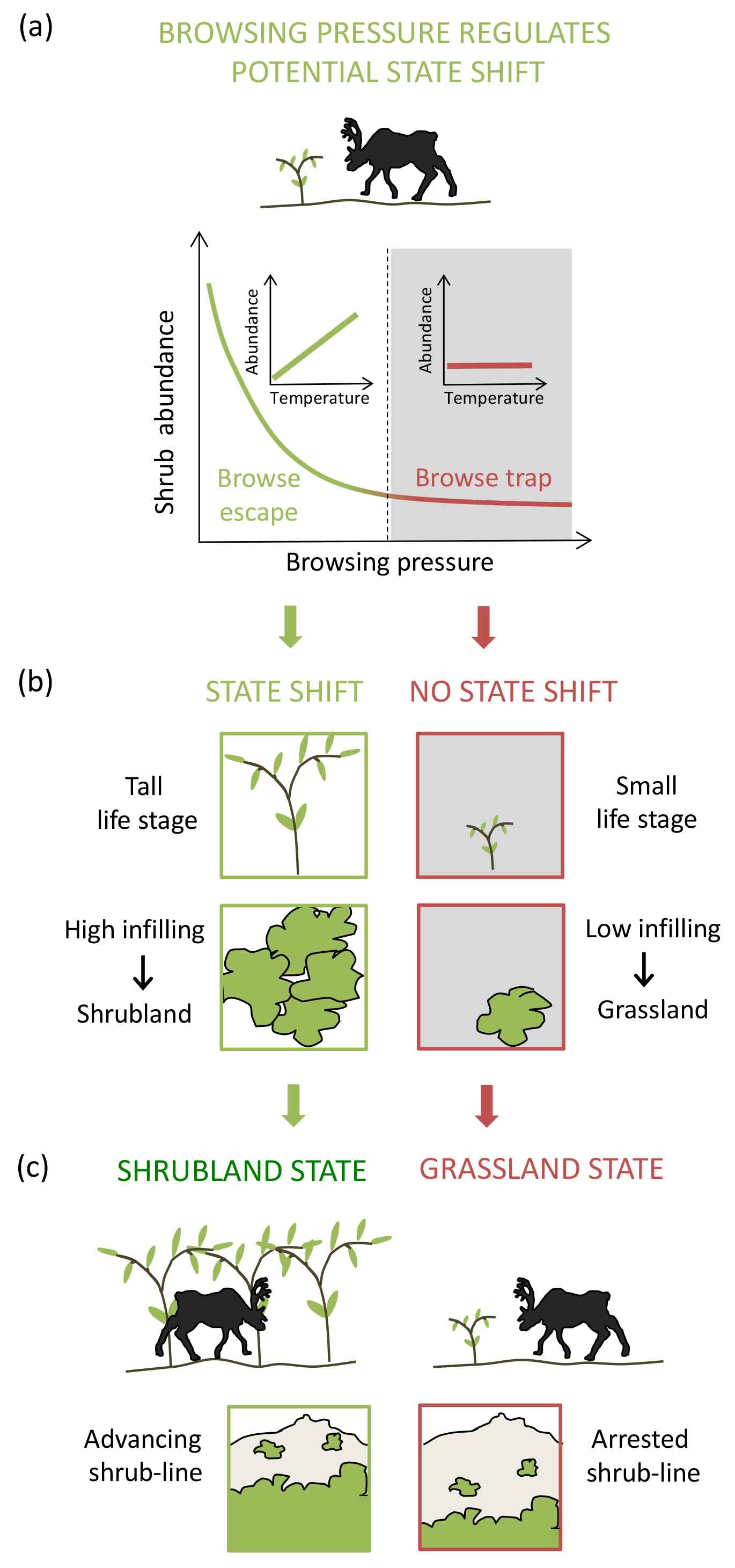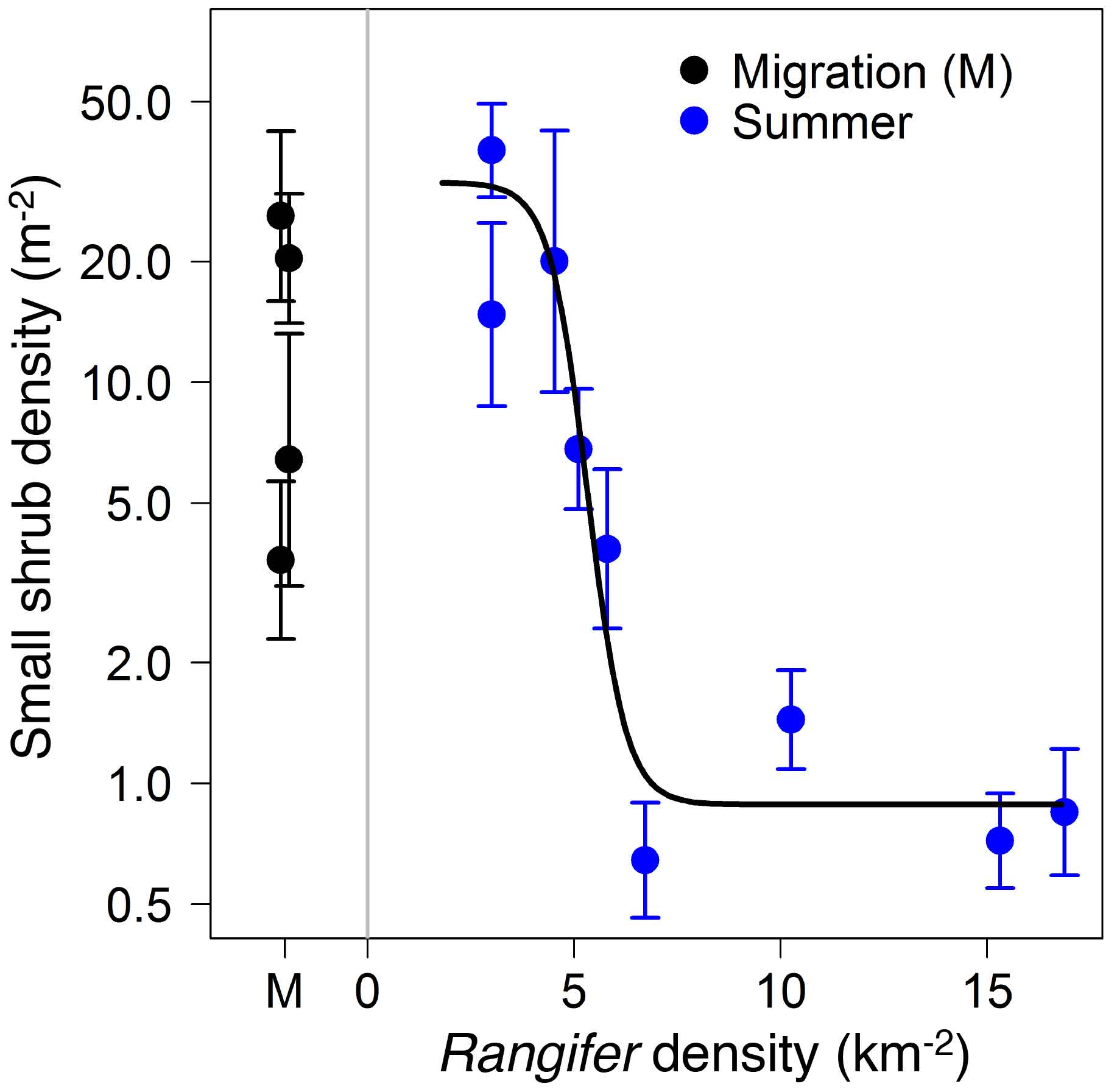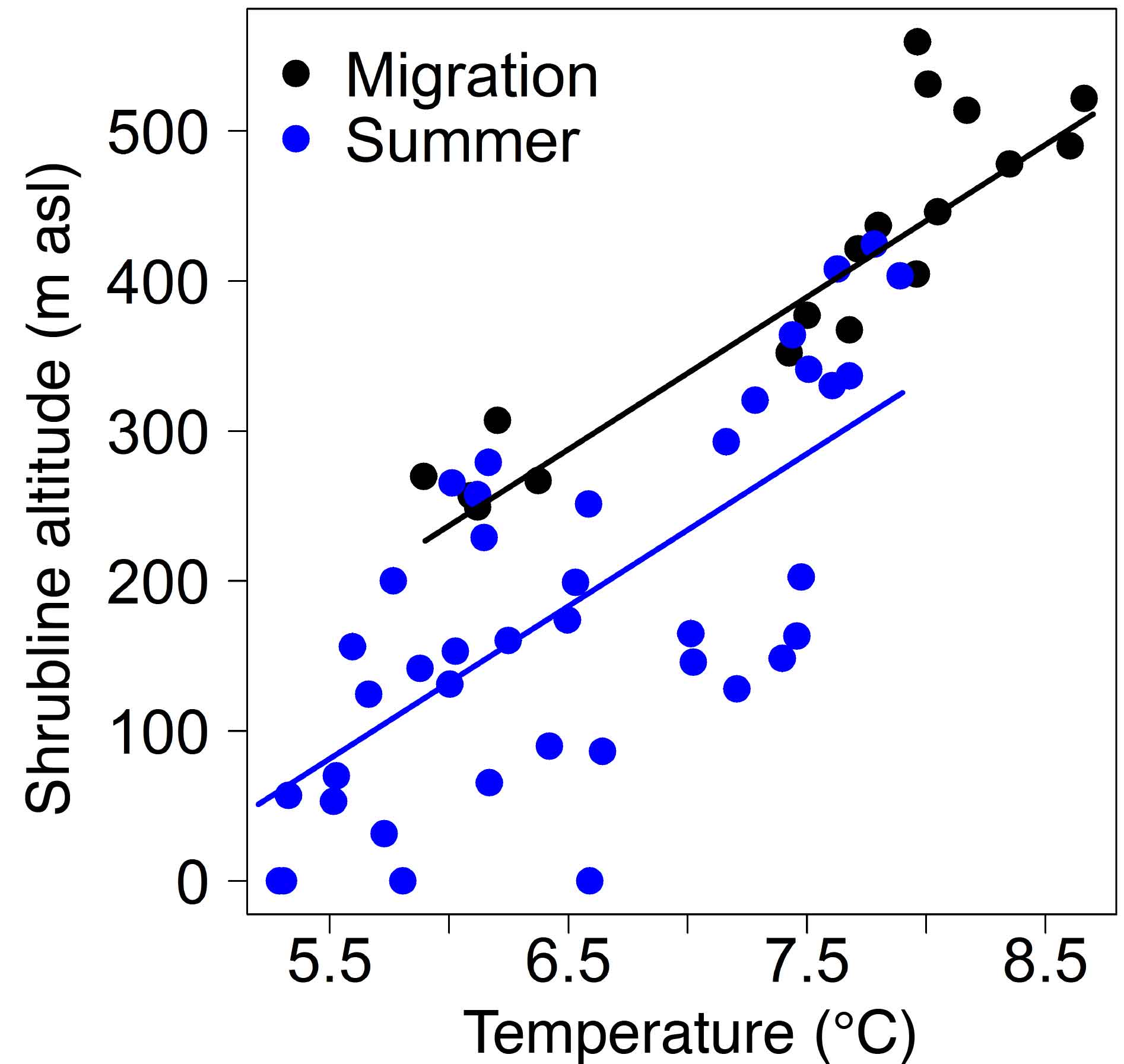 Palatable willows (Salix) are dominant tall shrubs and highly responsive to climate change. However, for the state transition to take place, small life stages of willow must become tall and abundant. Where reindeer are abundant, more specifically at densities above 5 reindeer per km2, the transition from small to tall life stages does not take place. The small life stages are kept in a browse trap by reindeer, and the shrubs are prevented from growing tall. However, where reindeer are at densities lower than 5 reindeer per km2, the shrubs are no longer in a browse trap and the shrubs grow taller and are more likely to reach their tall life stage with foliage beyond the reach of reindeer.
Palatable willows (Salix) are dominant tall shrubs and highly responsive to climate change. However, for the state transition to take place, small life stages of willow must become tall and abundant. Where reindeer are abundant, more specifically at densities above 5 reindeer per km2, the transition from small to tall life stages does not take place. The small life stages are kept in a browse trap by reindeer, and the shrubs are prevented from growing tall. However, where reindeer are at densities lower than 5 reindeer per km2, the shrubs are no longer in a browse trap and the shrubs grow taller and are more likely to reach their tall life stage with foliage beyond the reach of reindeer.
Our results were achieved through a large-scale quasi-experimental study design that included a range of reindeer management units across Finnmark with different reindeer densities, seasonal ranges and a gradient of 5°C in summer temperatures. We conducted ground-surveys in these management units during which we measured the abundance and height of the small shrub life stages. We also studied aerial photographs and assessed the shrubline, i.e. the elevation at which tall shrub life stages make up continuous shrublands.
As opposed to the small life stages, the tall life stages were responsive to increasing temperatures. In both migratory and summer seasonal ranges the shrubline increased 100 m per 1°C increment in temperature. However, we also found the shrubline to be at a 100 m lower elevation in the summer ranges as opposed to in the migratory ranges, where there is no browsing in summer. Because tall shrublands can be several decades old, we interpret this finding as indicative of that most management units have managed their reindeer at densities high enough to cause a browse trap during some time in the past.
In conclusion, reindeer management controls a climate-sensitive state transition in the tundra, and past management is visible in the landscape through reduced elevation of the shrubline.

